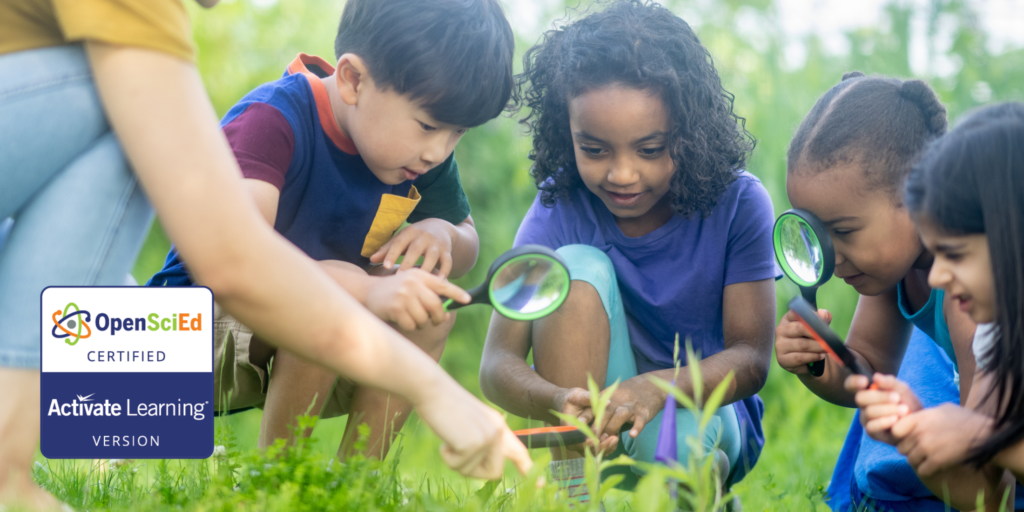Building Science Kits with Heart and Soul: Innovation and Student Empowerment Through Hands-On Learning (part 1)
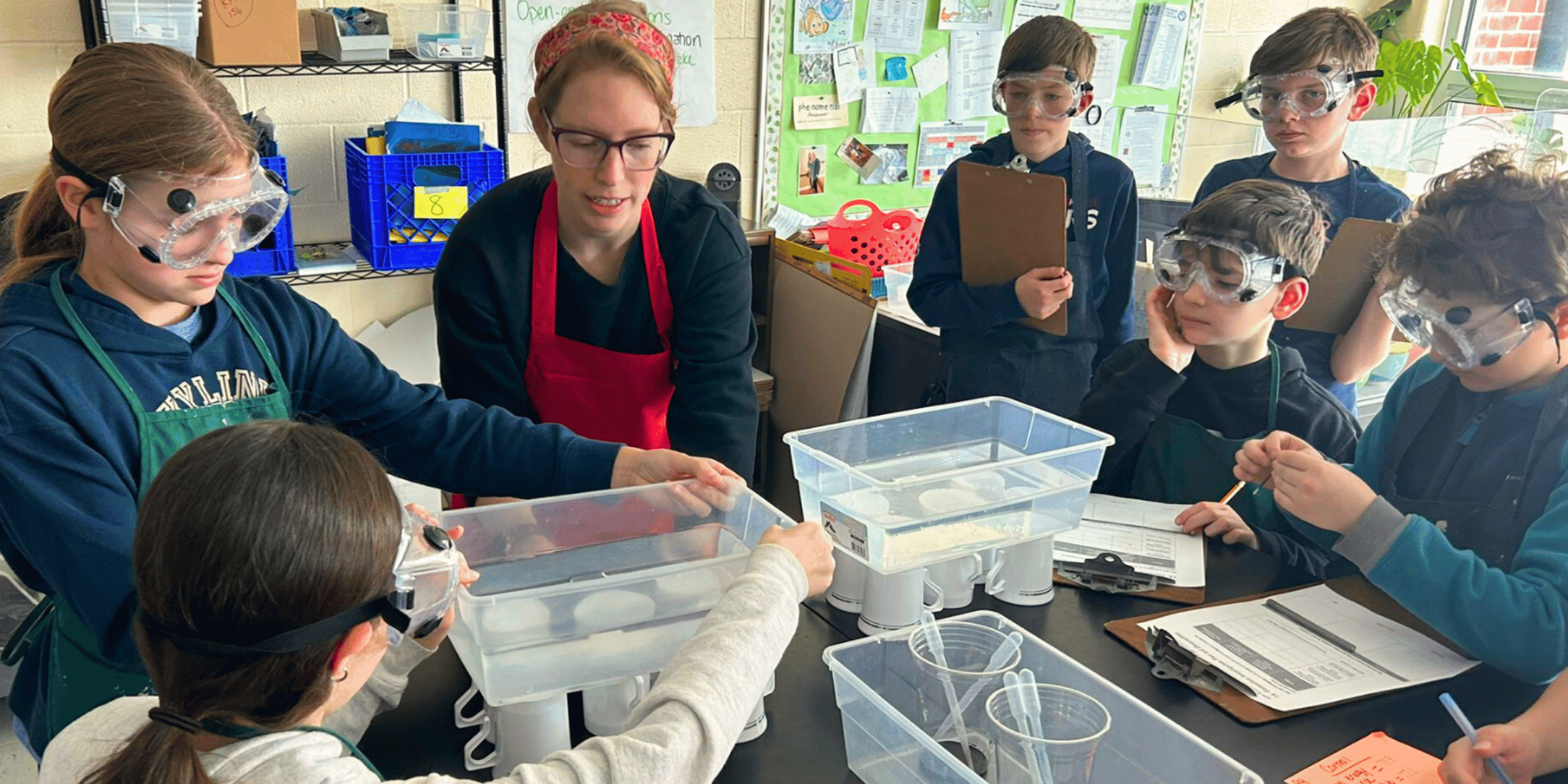
"Every book we ship, every kit we ship, every Professional Learning we conduct, offers opportunity. Opportunity for the teacher to be successful and impactful. Opportunity for the child to grow so much beyond the words on the page. Everyone in the class has the opportunity to develop and evolve into better patrons of the world, simply by participating!"
-- Dana Turner (Operations Manager, Activate Learning)
Welcome to Our New Three-Part Series on Science Kits!
We're excited to welcome you to the launch of our new three-part blog series exploring the evolution of science kits. In this series, over the next three months, we'll discover their transformative history, delve into the challenges teachers and districts face, and envision the future of science kits as technology and innovation take center stage.
To bring you the most insightful and valuable information, we tapped into the expertise and unique perspective of Dana Turner, Operations Manager at Activate Learning, who has over 25 years of experience working in the science curriculum publishing industry, developing and shipping science kits and materials to schools across the country. You'll learn the thought process that goes into designing science kits and why it takes a team of dedicated people who are passionate about science education for children to create classroom learning materials that empower teachers and students.
So, join us as we dive into the inspiring world of science kits!
The Evolution of Science Kits: From Hazardous Chemistry Sets to the Modern Kit
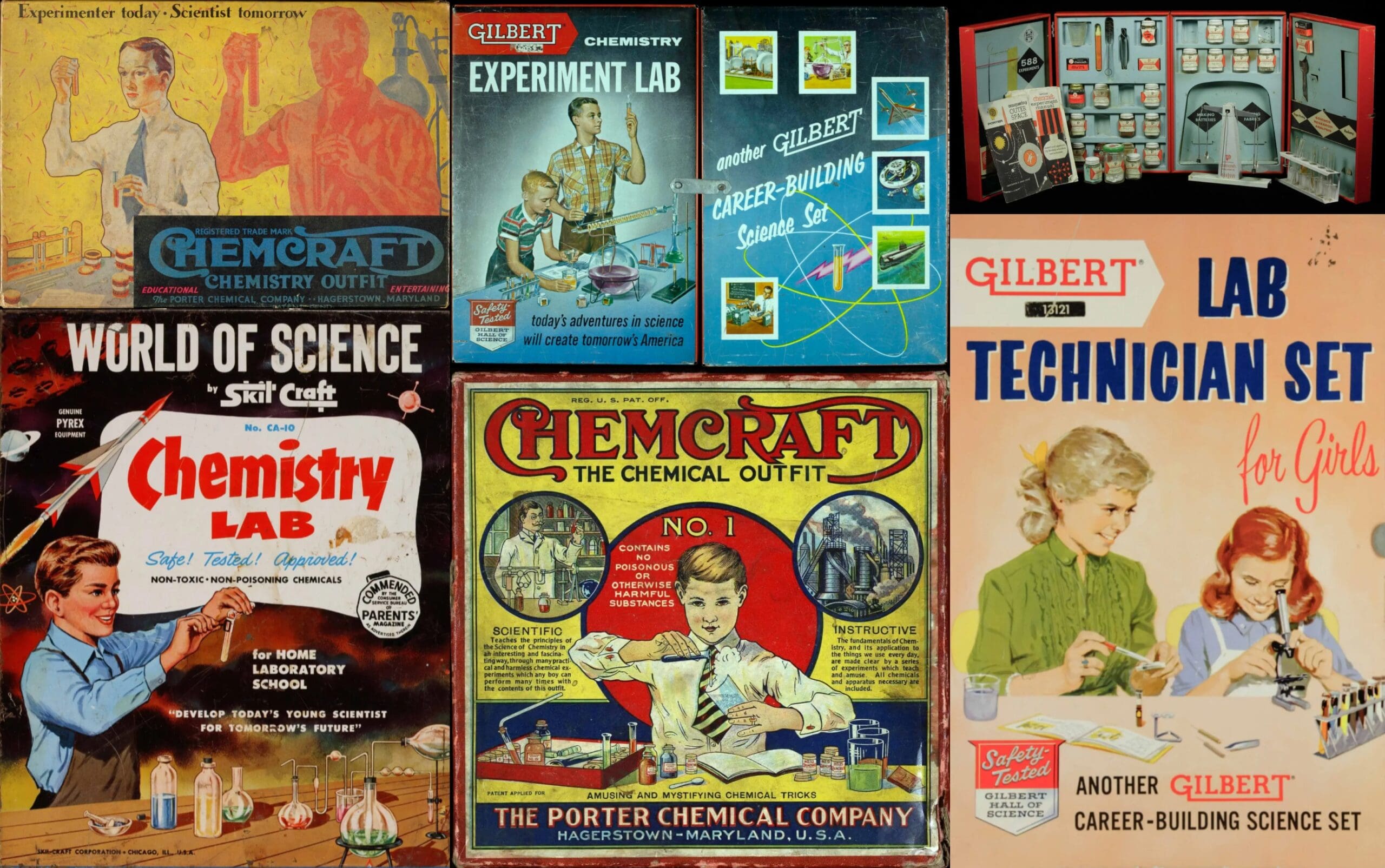
Chemistry sets (1920s-1960s) | Photos: Gregory Tobias/Chemical Heritage Foundation Collections
The history of science kits, particularly chemistry sets, is a fascinating tale filled with innovation, discovery, passion, and the changing attitudes of society towards science. The origins of science kits can be traced back to portable chemistry kits sold in the late 18th and 19th centuries to scientists and students for practical use in various fields.
From late 18th-century portable chemistry kits for scientists and students to must-have toys in the 20th century's era of scientific discovery, chemistry sets played a significant role in shaping young minds. These kits, containing a mix of harmless and potentially dangerous chemicals, inspired future scientists, including Nobel Prize winners like Robert F. Curl Jr., who credited chemistry sets for inspiring their careers (The Rise and Fall and Rise of the Chemistry Set).
Despite their popularity and effectiveness at inspiring young minds to pursue science, the rise of safety-conscious laws in the 1960s led to the decline of the chemistry set's popularity. The Federal Hazardous Substances Labeling Act of 1960 and the Toy Safety Act of 1969 resulted in the removal of many dangerous chemicals and equipment from the kits. Additionally, growing environmental awareness and a distrust of chemistry and government-funded science contributed to the decline in the appeal of chemistry sets.
But the 21st century brought with it a new host of problems for science to solve such as providing resources for a growing global population, addressing climate change, and exploring space. This has led to a renewed emphasis on science education, driving pedagogical shifts and the rise of the modern science kit.
The Ultimate Upgrade: Pedagogical Shifts Reinvent Classroom Science Kits
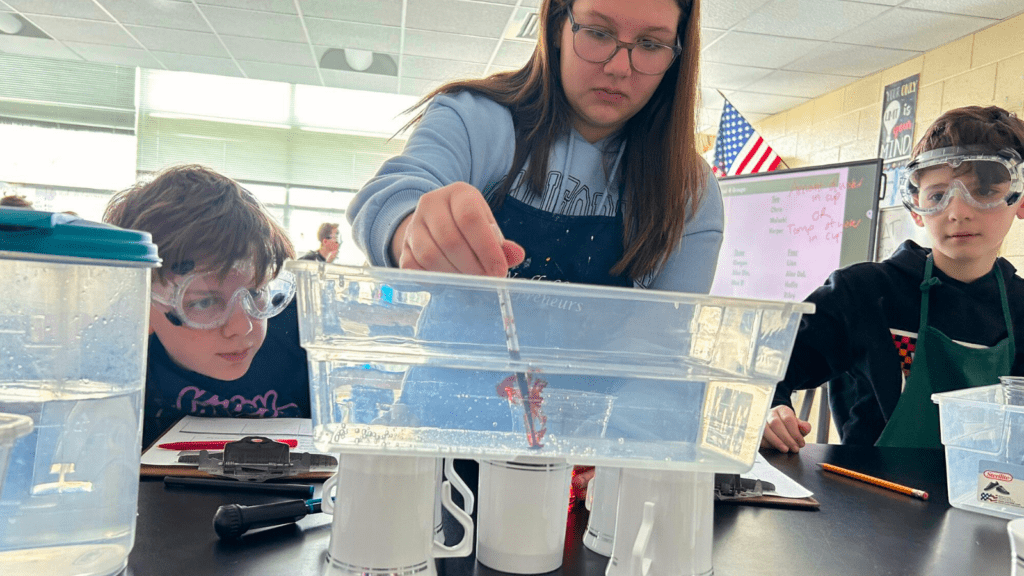
7th grade students learn about Hydroponic Plant Food OpenSciEd kit materials Photo: @MrsEtense (Twitter)
Over the years, several pedagogical shifts have played a crucial role in shaping the design and purpose of science kits. Dana Turner, Operations Manager at Activate Learning, has witnessed these changes firsthand while working in science curriculum publishing for 25 years.
Dana explains, "The shift away from guided instruction to students thinking for themselves and coming up with their own questions, and the transition of the teacher from a full-on instructor to a full-on facilitator giving up control of the classroom to the groups of students has been incredibly invigorating."
The 5E Instructional Model (Engage, Explore, Explain, Elaborate, and Evaluate) developed in 1987 and the comprehensive 7E Instructional Model, developed by Arthur Eisenkraft (author of Active Physics, Active Chemistry, and advisor of EarthComm) in 2003, which added Elicit and Extend to the original 5E model, encouraged collaborative learning and problem-solving.
But in the early 2000s, educators and industry leaders started noticing an incongruence between the increasing demands of the STEM job market and the skills acquired by college students to meet those demands. Many research reports in the 2000s and 2010s exposed the need for a more comprehensive approach to science education. This led to the adoption of project-based inquiry (2007) and phenomena-based learning (2016), which prioritize student-centered, active learning and real-world problem-solving.
These pedagogical shifts coincided with the creation of science standards, such as the Framework for K-12 Science Education (2011) and the Next Generation Science Standards (NGSS) (2013), which outline key scientific and engineering ideas and practices all students should learn by the time they graduate high school to be prepared to solve real world problems in real STEM jobs.
The NGSS, which promotes a cross-disciplinary approach to science education, also emphasizes equitable learning to ensure that girls and students from all socioeconomic and ethnic backgrounds, who are typically underrepresented in STEM fields, have access to quality science education that prepares them for STEM careers.
Post-pandemic studies like the recently published Active Learning: 'Hands-On' Meets 'Minds-On' (2021) report by Carnegie Mellon University's Human-Computer Interaction Institute, have emphasized the importance of 'hearts-on' learning, providing emotional and social support for students alongside hands-on and minds-on approaches.
These epic shifts away from traditional science learning have driven the need for science kits that facilitate hands-on, minds-on, and hearts-on learning experiences. This resonates deeply with Dana. She explains how these changes fuel her passion for developing science kits that empower children to understand and change the world around them.
"I remember back in the day I had to overcome a lot of things in the beginning of my professional career, and I simply wasn't armed with the skill set. I knew the words from the book well and I got the collaboration from sports, etc., but putting it all together to overcome the hurdles we as women faced in the 80's -- that was missing and confusing for me. That's what the approach Activate Learning implements solves daily. It puts all the factors together and arms the kids with that internal set of 'can figure it out' values. It allows them to take on challenges, work with others to solve problems, and operate in a class that offers different takes on that same challenge to resolve it. Students feel good about it, become productive, and ask bigger, better 'what if?' questions at the end. It becomes part of their nature. All things I didn't fully get until my late 20's, kids are now getting in Kindergarten! Now if that doesn't make a difference, I don't know what can!"
This new way of teaching science to students has been a game-changer in how science kits are designed, shipped, and implemented, requiring curriculum companies and educators to completely reimagine and redefine the classroom learning experience for students and teachers.
Next Generation Science Kits: Hands-On, Hearts-On, Minds-On!
Over the years, Dana fully embraced these pedogeological shifts to hands-on learning and enjoyed the process of discovery that brought innovation and experiential learning to classrooms. How did the curriculum team at Activate Learning redesign science kits to bring transformational learning to classroom that empowers both teachers and students?
According to Dana, there were a lot of questions that needed to be addressed that didn't always have easy answers.
"We had to stop and ask ourselves things like: How do we make this easier for the teacher to implement? How do we assure the correct outcome every time? What can we do to ease that transition for the teacher in their classroom and increase their confidence and comfort level? How can we help the teacher with classroom management? Over time what technological improvements are we seeing in the market as a whole? Can we take this transpiration activity and automate it, integrate it, simulate it and ultimately VR it?"
Science kits come in a myriad of forms and serve a wide range of purposes from subject specific kits, to DIY customizable kits, to science kits specifically designed for home schooling. Curriculum-based classroom science kits are comprehensive educational resources designed to support teachers and students in meeting specific learning goals outlined in curricula.
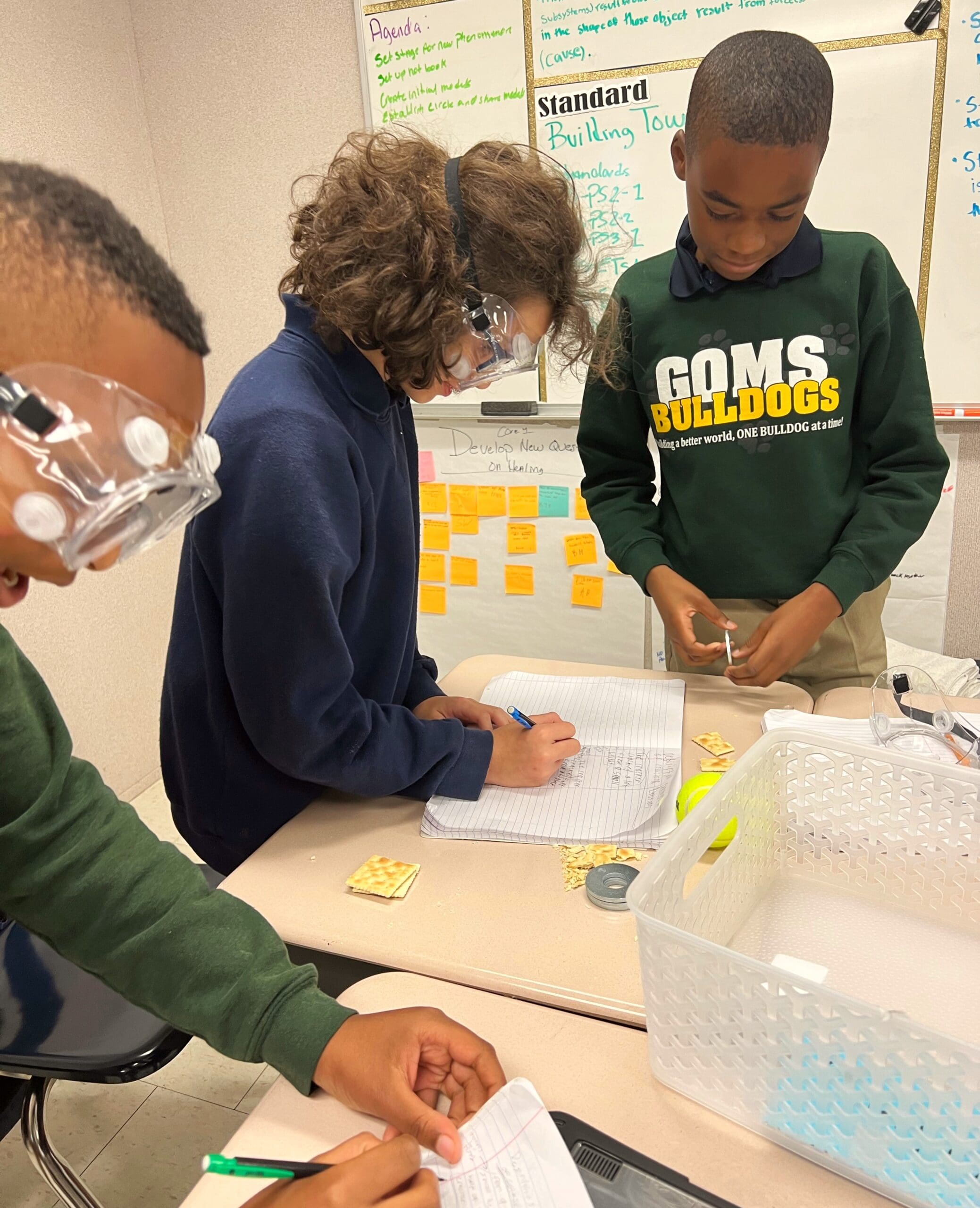
Ascension Parish middle school students using Activate Learning's OpenSciEd kit materials to learn about contact forces.
Curriculum-based science kits for classrooms typically include lesson plans, materials and equipment, student worksheets or activity guides, support materials, and assessment tools. They offer educators several advantages such as time saving and convenience, consistent and reliable outcomes, and engaging hands-on learning.
But navigating the world of science kits can be a daunting task for teachers and school districts. While basic science kits are a good start, they often fall short for school districts aiming to elevate students in STEM subjects. To meet the complex needs of educators in the post-pandemic world, science kits must go beyond just equipment and lesson plans.
Today's classroom science kits should make learning more accessible and enjoyable for all students by tapping into, and building on, their natural passion and curiosity for exploring the world around them and solving problems. Additionally, science kits should minimize friction for teachers in the classroom and for districts purchasing and managing supplies.
For example, Activate Learning's "next generation science kits" serve as a complete package for teachers and schools, providing not only the hands-on materials that engage students, but also a full suite of resources to support science education.
Our kits are also designed to be adaptable, allowing teachers to modify the materials and activities to the specific requirements, interests, and skill levels of their students. This integrated approach guarantees that teachers have all the tools they need to successfully implement the science kits in their classrooms, while also promoting a cohesive, transformational learning experience for students that prepares them for the future.

When we asked Dana about the most crucial features of a great science kit for both students and teachers, she provided deeper insights into their needs and how Activate Learning's next-generation science kits address them.
"Maybe we should be asking not what teachers love about our kits, but what they are learning when using those kits. Yes, teachers want the correct reliable tested equipment, ease of use when teaching, and the ability to easily reorder. We do all that. It's already baked into our packages. We also customize kits as needed and work with districts to implement those customized kits and professional development plans, so the implementation is successful. We are changing the way the teacher engages with the student one school at a time. We are also empowering the student to evolve into their future selves by arming them with collaboration, communication, development of explanations, critical thinking, data collection, organization and analyzation of data, observation and interpretation, and using evidence to support claims. These are what our kits offer."
A great example of how this support, flexibility and customization works is with the Activate Learning Certified Version of OpenSciEd middle school science instructional materials. While this innovative, opensource curriculum (which was just received an All Green rating from EdReports) is free, printing the curriculum (thousands of pages combined) and purchasing materials can be daunting and expensive. OpenSciEd offers a Materials List for each Unit itemizing supplies and where teachers can purchase them. This can easily become overwhelming for teachers. But our Certified OpenSciEd Kits (which includes our full suite of resources) make this process a breeze for teachers.
We also provide our OpenSciEd kit customers with free access to the teacher edition of the curriculum on our digital platform making it easier to plan lessons and teach.
Over the years, science kits have transformed from simple tools to comprehensive, innovative systems that foster hands-on, minds-on, and hearts-on learning experiences. Activate Learning's next generation science kits embody this progress, ensuring that schools have access to cutting-edge resources tailored to the needs of both students and teachers.
As far as Dana is concerned, the secret sauce in the success of Activate Learning's next generation science kits is the people who put their heart and soul into making the best products they can for students and teachers across the country.
"It starts with the ideas, the editors and writers and proofreaders and institutions who do the research to back up the claims. It rolls downhill to the field test classes, the teachers and students and observers who provide that valuable feedback. Then on to the designers of the equipment, packaging solutions and so many outside vendors who help put the apparatus together in their plant!! Can you even imagine the people who work tirelessly on the floor taking great pain to pack things just so in the kits? Or the Professional Learning facilitator who gets to go in and work with the teachers explaining all this "newness" to them and seeing the teachers get excited after understanding what it is they can do with this in the class! Is it hard? Yes, but anything worth doing is hard.
It takes a huge village full of like-minded people to make all this work, to do it every day, to know it hopefully will make a difference. That is what I have seen happen in our industry and that is what I love the most about our industry. The continued growth and evolution. In 1998 there were just a few of us, I could actually count on one hand how many of us there were but today, everyone is starting to take notice and that's progress."
As we look forward to the next installment of our blog series, we celebrate the innovative progress made in science kits through the years and the ongoing commitment of educators to shaping the future of STEM education. As Dana says, "anything worth doing is hard," but with the right tools and support, students and teachers can tackle challenges and build on their success, one step at a time, into the future, and Activate Learning will be with them every step of the way.
[Header Photo Credit: Sixth grade students at East Shore Middle School conduct experiments using OpenSciEd curriculum and science kit materials. Photo Credit: @MrsEtense (Twitter)]
* * * * *


